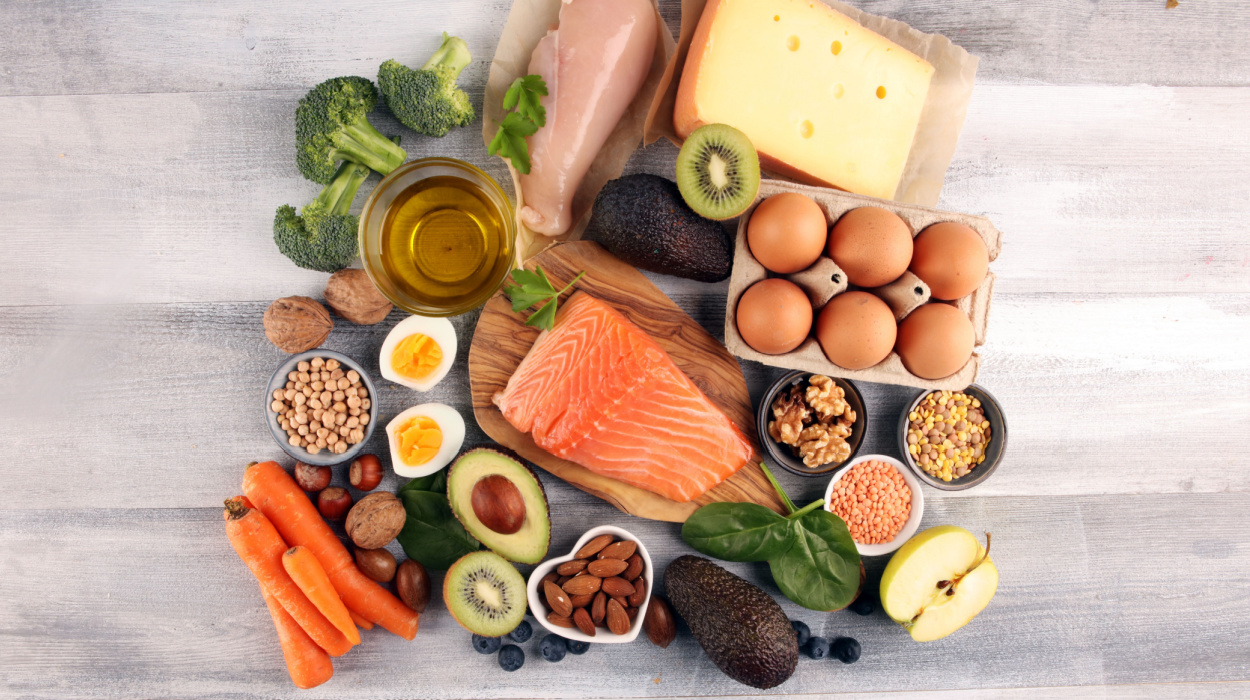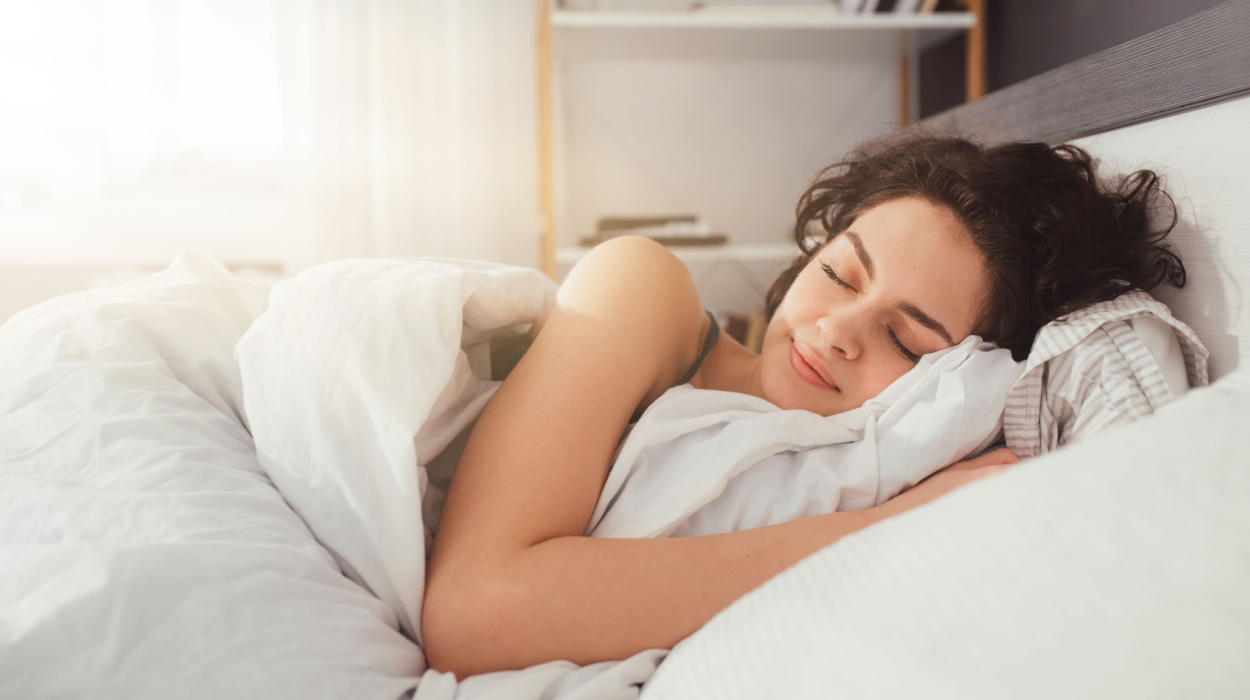How to lose finger fat might sound somewhat unusual at first glance. But it is not out of place to be concerned with it. Excess fat in a small area like the finger may hinder dexterity and cause discomfort.
The tips in this article can help you overcome finger fat by adopting a holistic approach. They will help you focus on lifestyle modifications like healthy eating habits, foods to avoid, and specific exercises.
So, whether you’re concerned about your middle finger, index finger, or all fingers, here’s how to make your fingers slimmer.
How To Get Skinny Fingers – 5 Best Ways
- Lower your salt intake.
- Follow a healthy diet.
- Do cardio.
- Manage stress and sleep.
- Treat any medical conditions.
Healthy Ways To Get Rid Of Fat Fingers
There are many ways to make your fingers thinner. However, before you try any method you hear from friends or social media, consider if it is a healthy option.
If you use unhealthy or harmful strategies to lose weight in your fingers, you may worsen the issue or create another problem. Fad diets and extreme workout regimens can result in various health issues. This means you could end up hurting your body rather than helping it if you are not careful.
Learn how to get skinny fingers by implementing these five healthy tips into your routine.
Lower Your Salt Intake
Cutting back on salt does not stop with maintaining a healthy heart; it may also help make your fingers slender.
Excessive salt intake causes fluid retention, which can result in the fingers appearing swollen. Research shows that high amounts of sodium[1] interfere with bodily fluid regulation, causing fluid retention. This excess fluid can cause swelling.
Therefore, one should make deliberate and conscious efforts to reduce their salty meal intake to lose water weight. Making dietary changes like selecting wholesome, unprocessed foods, herbs, and organic spices instead of excess salt may be helpful. Also, opt for low-sodium versions of your favorite foods, condiments, and sauces.
High salt levels can also be caused by dehydration.[2] So, ensure you drink plenty of water throughout the day to reduce the risk of fluid retention due to high salt levels. Drinking water also supports optimal circulation throughout the body.
Besides making the fingers slimmer, this lifestyle change encourages healthy living. Eating healthy foods like whole foods with less salt is not just about losing weight in your fingers. It is also about shedding an extra kilogram to prevent medical conditions like diabetes mellitus.
Follow A Healthy Diet

Losing fat on your fingers requires a healthy diet plan – just like burning fat on your whole body does. The important element of losing fat, including in the fingers, is creating a caloric deficit.
A calorie deficit involves consuming fewer calories than you burn daily. The body burns stored fat when you consume fewer calories than it needs. One helpful way to consume fewer calories is by avoiding processed foods and refined sugars.
Experts recommend a daily deficit of 500-1000 fewer calories[3] for safe, effective weight loss.
Healthy weight loss is also achieved by eating balanced meals[4] with various sources of vitamins and minerals. The emphasis should be on lean meats, whole grains, low-fat dairy, and multiple servings of fibrous fruits and vegetables. Fresh fruits make a great snack, are nutrient-dense, and support many body functions.
Hence, you can diet your way out of chubby hands by eating in a calorie deficit and being conscious of food quality. In addition to healthy diets, you can also try out fat-burning supplements.
Do Cardio
Exercise or physical activity[5] is another helpful tip on how to make your fingers skinnier and lose fat. It increases your body’s metabolic rate, using up blood glucose and eventually breaking down fat for energy.
While you cannot target fat loss with the fingers, you can use physical activity as a tool to burn calories. The body will burn stored fat when it needs energy.
Genetics[6] plays the biggest role in determining where your body burns fat first and last. However, fat is likely to be burned throughout your body as you exercise. Fat loss on your fingers will occur eventually, so consistency and dedication are essential.
Cardio is a great way to burn some extra calories[7] and support the health of your lungs[8] and heart. Another bonus of this form of exercise is that there are many types to choose from. This means you can pick activities you enjoy and are more likely to do regularly.
Cardio Examples
A few examples of cardio include the following:
- Running.
- Walking.
- Climbing stairs.
- Cycling.
- Rowing.
- Swimming.
- Playing sports
- Hiking.
- Performing sprints.
Choose a few forms of cardio you will look forward to rather than dread, and engage in them a few times a week. If you are new to working out, try starting with walking.
Committing to a 20-minute daily walk is a manageable task and a good place to start. Increase the amount of time you walk over time and possibly throw in a bit of jogging.
If you can find cardio activities that you enjoy and continue to challenge yourself, you will likely eventually lose fat on your fingers. It may take time, but you will also be losing fat elsewhere in your body. Your cardiovascular system and mental health will also benefit, making exercise an overall helpful habit.
Manage Stress And Sleep

Recent findings from scientific research reveal that increased levels of stress hormones like cortisol are associated with an increase in obesity.[9] This means that people who are often stressed are more likely to develop obesity.
Additionally, a 2018 review shows results of individuals who regularly had less than seven hours[10] of sleep every night. They discovered that there is an increased chance of higher average body mass indexes in said individuals.
These studies reflect the impact of stress and sleep deprivation on weight gain. If you fail to manage stress healthily and get inadequate sleep, you are predisposing yourself to weight gain. This weight gain can manifest in fat distribution to your fingers.
Treat Any Medical Conditions
Some underlying medical conditions[11] may contribute to increased body fat that can eventually lead to fat fingers. Examples of these medical conditions that cause obesity are an underactive thyroid, Cushing’s syndrome, and a rare genetic disorder called Prader-Willi syndrome.
Have you tried exercising, dietary changes, stress management, and getting adequate sleep without success? Consider visiting your physician to rule out the possibility of any other medical conditions. Everyone is different, so certain lifestyle changes that work for others may not work for you.
Causes Of Fat In The Fingers
Temporary Finger Swelling
Swollen fingers tend to appear fatty. However, this swelling is temporary, and you can reduce swelling with the appropriate remedy. Temporary finger swelling can be caused by fluid retention from excessive salt consumption and is not necessarily from subcutaneous fat.
Weight Gain And Body Fat Accumulation
People may gain extra fat on their fingers when they accumulate excess body fat on their entire body in general. Consuming more than the daily required calories and living without physical fitness can result in unhealthy weight gain. This weight gain can affect the fingers as well.
To resolve this, reduce processed foods and adopt a balanced, nutrient-rich diet by introducing a caloric deficit. Exercise will also increase energy expenditure, aiding a calorie deficit.
This is a tested and trusted route to losing weight and preventing excessive fat from depositing into the fingers.
Underlying Medical Conditions
Fat fingers can be due to some medical conditions. An example of such a condition is a disorder known as hypothyroidism,[12] where the thyroid gland does not produce enough thyroid hormone. This leads to weight gain and water accumulation[13] in soft tissue.
Other issues arising due to metabolic abnormalities or hormonal fluctuations might also affect finger appearance. If fat fingers continue, it is important to see a physician who can identify possible underlying conditions and prescribe what is needed.
Conclusion
This guide on how to get rid of finger fat describes healthy options for achieving slimmer fingers. Knowing the different reasons for fat in the fingers can help you determine the best solution for you.
Salt reduction and adequate water consumption have proved effective remedies for temporary finger swelling. Losing excess fat, even on the fingers, requires a holistic approach that incorporates eating nutrient-rich foods, exercising, managing stress levels, and being in a caloric deficit.
Finally, if fat fingers do not go away or are associated with other symptoms, consult a physician, who will perform a full exam and guide the treatment of any possible medical issues.
Frequently Asked Questions
It is not possible to target fat anywhere on the body. This includes your fingers. However, healthy habits can help you burn fat everywhere in your body, eventually resulting in slimmer fingers.
Exercise can help you get rid of fat fingers. The body burns stored fat for energy during exercise, and this fat source is usually all over the body – even in the fingers.
Many changes occur with aging. For example, skin thickness usually declines, but the knuckles are more prominent. Chances of arthritis and edema[14] also increase with age and may contribute to thicker fingers.
 Evidence Based
Evidence Based
